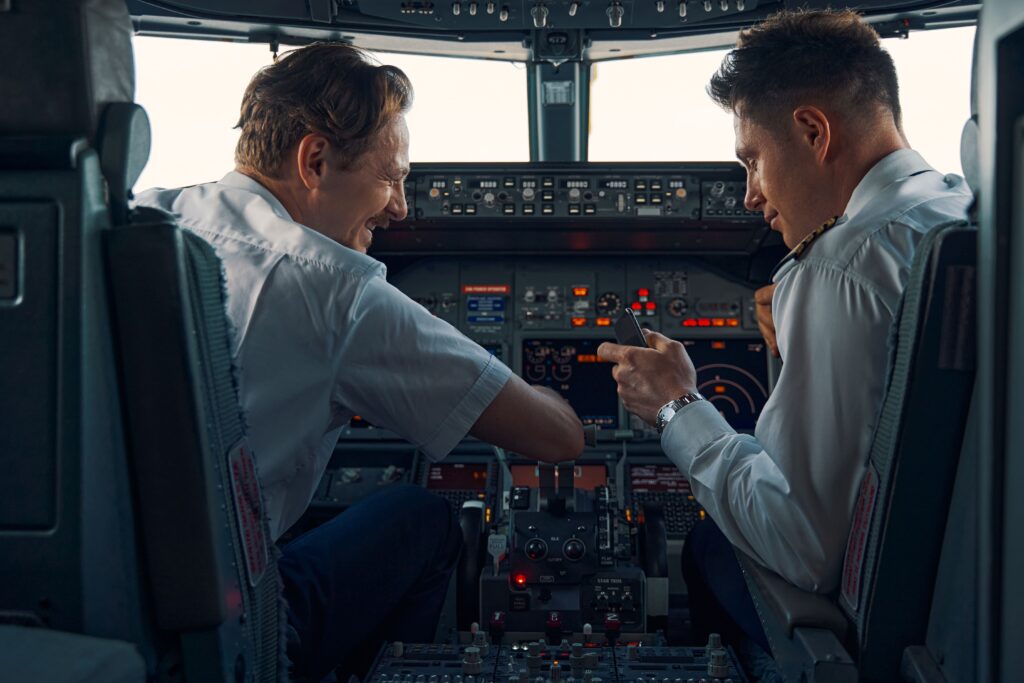
In the late 1990s, a pivotal era for both popular culture and technological advancements, the aviation industry witnessed a paradigm shift in safety management. Amidst the backdrop of the O.J. Simpson trial and the Tamagotchi craze, a critical development was taking place in aviation: the inception of NOTECHS, a system designed to evaluate the non-technical skills of aviation crew members.
This initiative marked a significant move towards recognizing the human factors crucial in averting aviation mishaps.
NOTECHS assesses pilots’ social and cognitive skills performance and provides feedback to help reduce pilot error and improve safety.
Discover all our aviation-related topics.
Since its introduction, NOTECHS has become a staple in the airline industry for assessing potential crew members’ abilities in areas beyond mere technical expertise. With research suggesting that up to 80% of aviation accidents are attributable to human factors like pilot error, communication lapses, and poor decision-making, NOTECHS serves as a vital tool in enhancing overall flight safety.
The NOTECHS structure is designed to consider relevant components in the workplace and the organisational domain. Social and cognitive skills are the two primary non-technical skills that transfer to the aircraft domain.
Crew members mainly communicate social skills verbally, which allows them to discuss possible conflicts and work together to resolve problems. Examples of communication between crew members include acknowledging commands, conducting briefings, and conveying information, all essential components for a safe and efficient flight. The Federal Aviation Administration has also announced that crucial areas of communication improvements include pre-flight briefings and landing procedures.
Cognitive skills are mental processes that occur to gain situation awareness and make decisions, including planning, prioritising, and decision-making. Examiners cannot observe this skill set directly, but they can infer it when the pilot states a decision. A pilot with a strong cognitive mind is more proficient in emergencies and has a greater mental capacity to assess the situation and monitor progress towards goals.
The NOTECH framework is divided into three different levels:

Let’s start from the top and work our way down.
Evaluators assess pilots not only on their technical expertise but also on their social and cognitive skills. NOTECHS categorises non-technical skills into four key areas: co-operation, leadership and managerial skills, situational awareness, and decision-making. Each category addresses specific aspects of crew performance crucial in high-stress and dynamic flight environments.
Co-operation refers to a pilot’s ability to work effectively and communicate efficiently with their colleagues, creating a harmonious and productive working environment. It involves active listening, clear communication, and flexibility in adapting to different situations.
Leadership and managerial skills focus on a pilot’s ability to coordinate and manage tasks, direct an entire group, and make critical decisions in challenging situations.
Situation awareness is a pilot’s awareness of their surroundings, including the aircraft systems, external environment, time, and their projected status in the future. It involves monitoring multiple sources of information, processing them effectively, and making critical decisions based on the available data.
Decision-making involves recognising a problem, evaluating possible options, and selecting the best course of action. Pilots must be able to make quick and effective decisions, even in high-pressure situations.
These non-technical skills are critical for pilots to operate effectively and safely in complex and dynamic environments.
Under each category, evaluators assess specific elements such as team building, awareness of aircraft systems, and problem recognition. For instance, co-operation is a category that consists of several elements, such as team-building and maintaining, considering others, supporting others, and conflict-solving. Examiners evaluate the test subjects based on their ability to exhibit these elements:
| Category | Element |
| Co-operation | Team building Considering others Supporting others Conflict solving |
| Leadership and Managerial | Use of authority and assertiveness Providing and maintaining standards Planning and co-ordination Workload management |
| Situation awareness | Awareness of aircraft systems Awareness of external environment Awareness of time |
| Decision-making | Problem recognition and diagnosis Option generation Risk assessment and option selection Outcome review |
The system uses behaviour markers to assess each element objectively. These markers indicate whether specific actions positively or negatively impact the crew’s performance.
Behavioural markers are observable, non-technical behaviours that contribute to superior or substandard performance in a work environment. Users can apply them in any domain where job performance-related behaviour is observable, but their development and use require training and calibration, which makes them expensive. As a result, people commonly use them in occupations where safety is paramount and rely on high-fidelity simulators for training and assessment, such as in aviation, nuclear power generation, military settings, and, to a lesser extent, in medicine (anaesthesia and surgery).
Behavioural markers enable performance measurement for training and assessment, training evaluation, and safety management. Users also employ them to highlight positive performance examples, provide a shared vocabulary for training, briefing, and debriefing, and give feedback on performance at individual, team, organisational, and system levels.
| Element | Positive behaviour | Negative behaviour |
| Considering others | Helps other crew members in demanding situations | Hesitates to assist other crew members |
Assessors rate individuals on a five-point scale for each element. The scale ranges from very good, good, acceptable, poor, and very poor. Additionally, each element must have a final overall rating, indicating whether it was acceptable or unacceptable.
The Joint Aviation Authorities have established five operating rules while conducting the NOTECHS assessment.
As the NOTECHS evaluation system is based on standardised conditions of acceptable skills and behaviours, practitioners can use it to check whether the performance of crew members in the actual work environment has improved.
The NOTECHS system is widely used as an assessment tool to evaluate Crew Resource Management (CRM) performance. CRM training courses include various modules that cover leadership and supervision, techniques for developing cognitive skills, implementing skills in task management, recognising critical signals, and more.
The primary objective of CRM is to teach pilots about non-technical cognitive and interpersonal skills necessary for a successful flight. NOTECHS provides standardised grouping that can also be used to evaluate the effectiveness of CRM training itself.

Equip yourself with the right tools to evaluate your student’s NOTECHS.
At NaviMinds, we offer an immersive and exciting 1-day CRM course for Line Training Captains. Our course provides a comprehensive overview of CRM principles and is perfect for both new and experienced Line Training Commanders. Our expert trainers use cutting-edge techniques to help you understand how students learn and provide you with the best handover techniques to evaluate your students’ CRM skills (NOTEHCS). With a mix of role plays, video clips, interactive exercises, and group discussions, our course is designed to engage you and help you learn in the most fun and exciting way possible.
To learn more about our Line Training Captain CRM course, contact us at +45 26 37 39 39 or ask@naviminds.com.
Dive into our insightful and informative articles that will help you explore more and get ahead of the competition.
© 2024 NaviMinds – Designed by Aveo web&marketing